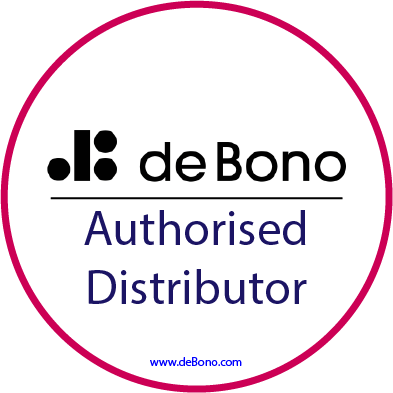 Creativity is not just about artistic endeavours, it’s a strategic tool that fosters growth, competitiveness and sustainability. Several businesses have struggled or ultimately failed due to a lack of creativity, innovation or adaptation to changing market conditions.
Creativity is not just about artistic endeavours, it’s a strategic tool that fosters growth, competitiveness and sustainability. Several businesses have struggled or ultimately failed due to a lack of creativity, innovation or adaptation to changing market conditions.
While it’s not always just a lack of creativity that leads to failure, in many cases, it is a significant contributing factor. Here are a few you might remember:
- Blockbuster: Blockbuster didn’t adjust to the shift in video rentals and streaming. They could have bought Netflix, instead they stuck with their traditional store-based approach, not realising how popular digital streaming would become.
- Kodak: Kodak invented the technology behind digital cameras but hesitated to move away from its profitable film business. This delay allowed competitors to dominate the digital market, leading to Kodak’s bankruptcy.
- Yahoo: Once a titan of the internet, Yahoo failed to keep up with competitors like Google and Facebook because it lacked innovation and a clear direction. Frequent leadership changes and inconsistent strategies also hindered its ability to build on its early successes in search, email and online advertising – leading to its gradual decline.
Businesses need creativity now more than ever
Creativity fuels innovation by driving the development of new products, services and solutions that meet changing customer needs. In a fast-paced, competitive environment, innovative ideas sparked by creativity set businesses apart from their rivals, by helping them to:
- Solve problems effectively: today’s business problems are intricate and interlinked. Creative thinking helps businesses find effective and sometimes unconventional solutions to these complex issues, whether they involve logistics, technology, management or customer service.
- Be flexible and adaptable: technological advances, shifts in consumer behaviour and the global economy are continuously changing. Creativity helps businesses adapt by ensuring there is a constant supply of fresh ideas, to implement to remain relevant and competitive.
- Differentiate: no organisation stays unique, in competitive markets, creativity helps businesses distinguish themselves. Standing out in a meaningful way captures attention and builds customer loyalty.
- Enhance customer engagement and experience: by creatively using digital technologies, businesses can create immersive and interactive customer experiences that foster stronger connections and improve customer satisfaction.
- Ensure motivated employees don’t leave: a workplace that provides the tools and techniques for people to foster creativity, makes employees feel valued and inspired – boosting morale and productivity. This environment encourages employees to think creatively and grow, enhancing job satisfaction and helping you retain top talent.
- Be resilient: creativity helps businesses quickly adapt in crises, enhancing resilience. For instance, during the COVID-19 pandemic, many businesses shifted to remote work, created new online services or changed their products to meet new consumer needs.
- Expand globally: creativity helps businesses tailor their products and services for global markets, understanding and incorporating cultural differences into their offerings. This can be crucial for global expansion and success.
What creative process should we use?
Lateral thinking is a creative problem-solving method that involves looking at problems from new and unusual angles, rather than following traditional, linear approaches. Developed by Dr Edward de Bono, it encourages breaking away from conventional reasoning patterns to generate innovative solutions.
Lateral Thinking is particularly useful in situations where traditional logic has failed to produce a solution or where the problem itself is poorly defined. It’s widely applied in fields like marketing, product development and management, where innovation and new approaches are highly valued.
The Lateral Thinking workshop
It’s a tools-based approach to creative thinking that you can implement confidently. It teaches you all the tools and techniques you need, to be able to follow the creative process:
- Alternatives – how to use ‘concepts’ as a breeding ground for new ideas.
- Focus – the discipline of defining your focus from the outset and sticking to it. How to generate and use a ‘creative hit list’.
- Challenge – breaking free from the limits of the accepted ways of operating.
- Random entry – using unconnected input to open up new lines of thinking.
- Provocation and movement – explore the nature of perception and how it limits our creativity. Provocation techniques are designed to challenge these limitations. Movement is a new mental operation that we can use as an alternative to judgement. It allows us to develop a provocative idea into one that is workable and realistic.
- Harvesting – at the end of a creative thinking session, we normally only take note of the specific ideas that seem practical and have obvious value. We need to make a deliberate harvesting effort to collect ideas and concepts that are less well developed.
- Treatment of ideas – how to develop ideas and shape them towards their practical application in your business.
Find out more about the workshop:


